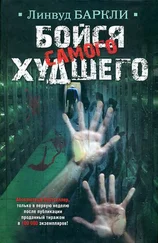“By ‘expert,’ do you mean ‘hacker’?” Delgado asked.
“Possibly,” Cartland said. “Litvin met this morning with the ambassador, in Grand Central. Dr. Petrov was described, essentially, as a neutralized threat. And Litvin made a joke about not going up the Empire State Building.”
“He’s not the only one,” quipped someone.
Cartland acknowledged the comment with a nod. “True. Their conversation was interesting but not conclusive. But we have to consider the possibility that the scientist’s death was a hit.”
Bourque said, “So you create a series of accidents, a kind of smokescreen. The only one you want to kill is the doctor, but if you only kill her, you raise too many red — no pun intended — flags. It looks like a Putin hit, plain and simple. But you let a few others perish in the process, we don’t know where to focus our attention.”
Cartland nodded. “Like I said, it’s kind of out there. But someone has gone to a lot of trouble to sabotage these elevators, and the Russians have people with the expertise to get it done. Now you tell me you’ve got a Russian-born elevator technician who was murdered two days ago. That lengths were taken to make it difficult to ID the body. That members of his extended family had the fear of God put into them.”
He uncrossed his arms. “My theory’s starting to sound slightly less fanciful.”
Following the mayor’s disastrous media event, Barbara could have wandered the city — and she would not have had to wander far — compiling stories about the chaos that had been launched by shutting down all the elevators in New York.
But that was the story every other media outlet in the city was chasing, and the truth was, they could do a much better job of it. Hundreds of people working their way down concrete stairwells, person-in-the-street interviews, frustrated tourists who’d come all the way from Flin Flon, Manitoba, wanting to go to the top of the Empire State Building and being turned away — these were tales made for TV. Lots of visuals. Angry people. Collapsing people. Network news crews were fanning out across the city.
Barbara figured, let ’em have it. Let them do what they’re good at. After her brief meeting with Chris Vallins, she hurried back to her apartment, hoping she could get there before her landlord shut down the elevators. If they were working, she was going to take one of them, figuring the odds it would take her to her death were slim. But she was too late. The elevators were plastered with two signs written in Sharpie that read: Closed by Order of Mayor Richard Shithead.
Barbara had always harbored a fondness for her landlord.
Once she’d reached her apartment and had taken a moment to catch her breath, Barbara put on a pot of coffee, sat down at the kitchen table, and fired up her laptop.
Barbara didn’t need to know how many elevators New York had. Barbara didn’t need to know how many millions of people were inconvenienced. Barbara didn’t need to know how many people would drop dead of heart attacks by the end of the day from taking the stairs up to their thirty-fifth-floor apartments, although that would be an interesting statistic. Barbara thought it was entirely possible more people would die not using elevators than would die in them.
No, what Barbara needed to know was why, and who .
Why would someone who wanted to kill people decide to do it by sabotaging elevators? Why not just pick up a gun and shoot them? Why not run them down with a car? Why not start a fire in an apartment hallway in the middle of the night? If you wanted to kill a few people, any of these methods would be easier.
Why not, well, blow up a taxi?
A bomb in a cab was very effective at taking out a few innocent people. It was pretty random, but if you were looking to make some kind of demented statement, it would do the trick.
Was the elevator saboteur trying to make a statement with the elevator deaths?
Were the victims random? Were the buildings random?
Barbara thought about that.
Even if you could take over an elevator’s controls, could tell who was in it at any given time by looking at them with a camera — thank you very much for that tip, Chris Vallins — it didn’t strike Barbara as a very efficient way to kill a specific person.
How long would you have to wait for your potential victim to board the elevator? What if the person took the stairs? What if the person went out of town? And if there were several elevators in this particular building, how long might you have to wait for the person to take the one you had rigged to fail?
Let’s say this person you wanted to kill finally got on the right elevator at the right time. Was there any guarantee that when the elevator went haywire, the person you wanted dead would actually die? Paula Chatsworth had survived, at least for a while. And from what Barbara knew of the second incident, that Russian scientist would still be around if she hadn’t decided to crawl out of that stalled elevator when it was stuck between floors. No one could have predicted she’d do that.
And the event this morning, where two people fell into the bottom of the shaft?
Barbara pictured people crowded around an elevator first thing in the morning, waiting for the elevator to arrive. The people who might be standing closest to the doors, waiting for them to open, would be totally left to chance. Completely random. And if someone had pushed them into the shaft, they would have been seen.
All of which led Barbara to conclude that the victims really were random.
But what about the locations? Why was the Lansing Tower on Third Avenue targeted on Monday? What was it about the Sycamores Residences, just south of Rockefeller University, that made it the saboteur’s choice for Tuesday? And today it had been the Gormley Building on Seventh.
Was there a common thread tying these locations together?
The coffee machine beeped. Her fresh pot was ready.
“What was I thinking?” Barbara said, getting up and walking right past the coffee machine to the refrigerator. She took out a bottle of chardonnay, unscrewed the top, and found a glass to fill.
She sat back down and began an internet search on the buildings, starting with the Lansing Tower, site of the first incident. There were, not surprisingly, hundreds of stories that mentioned the building. It housed a company devoted to movie and TV production — Cromwell Entertainment, the one Sherry D’Agostino had worked for — as well as top legal firms, even an office for the Department of Homeland Security.
That last tidbit of information was interesting, Barbara thought. She filed it away for possible future reference.
There was also a profile of New York real estate developer Morris Lansing, who had named the building after himself. Hey, if Trump could do it...
Lansing, sixty-nine, had been one of the city’s more illustrious characters for the better part of thirty years. And in those thirty years, he had probably made himself a few hundred friends and a few thousand enemies. You didn’t get that far up the city food chain without pissing off a lot of people. Had Lansing angered someone to the point that they’d fuck up his building?
Finally, there were real estate type ads. While the Lansing Tower was mostly commercial, there were some residences on the upper floors. Barbara had to fend off pop-up inquiries.
Next, she did a search on the Sycamores Residences. What came up first, of course, was the tragedy from the previous day. She ignored the recent news items, refining her search so it excluded this week.
Once she had done that, up came more real estate ads. There were several available units in the Sycamores. Some of them offered a view of the East River, and all touted the building’s amenities, including a playground for kids, a gym, and large party rooms that could be rented for special occasions. Did Barbara want to buy or rent? Boxes kept popping up on her screen, inviting her in to chat with an agent. She kept clicking on X’s to get rid of the boxes, which couldn’t have been more annoying if they were a swarm of mosquitoes buzzing around her head.
Читать дальше
Конец ознакомительного отрывка
Купить книгу








![Линвуд Баркли - Последний выстрел [litres]](/books/412435/linvud-barkli-poslednij-vystrel-litres-thumb.webp)



